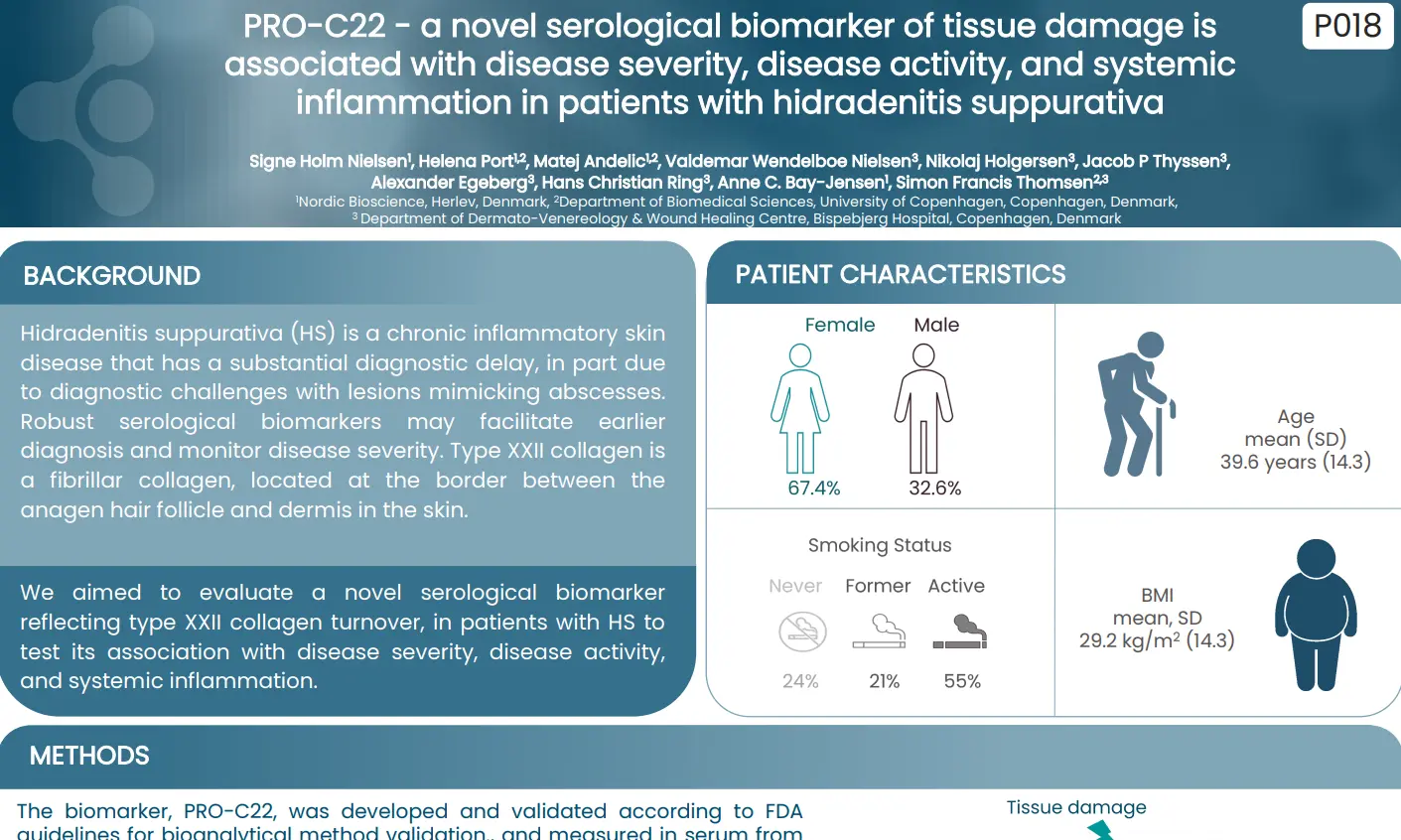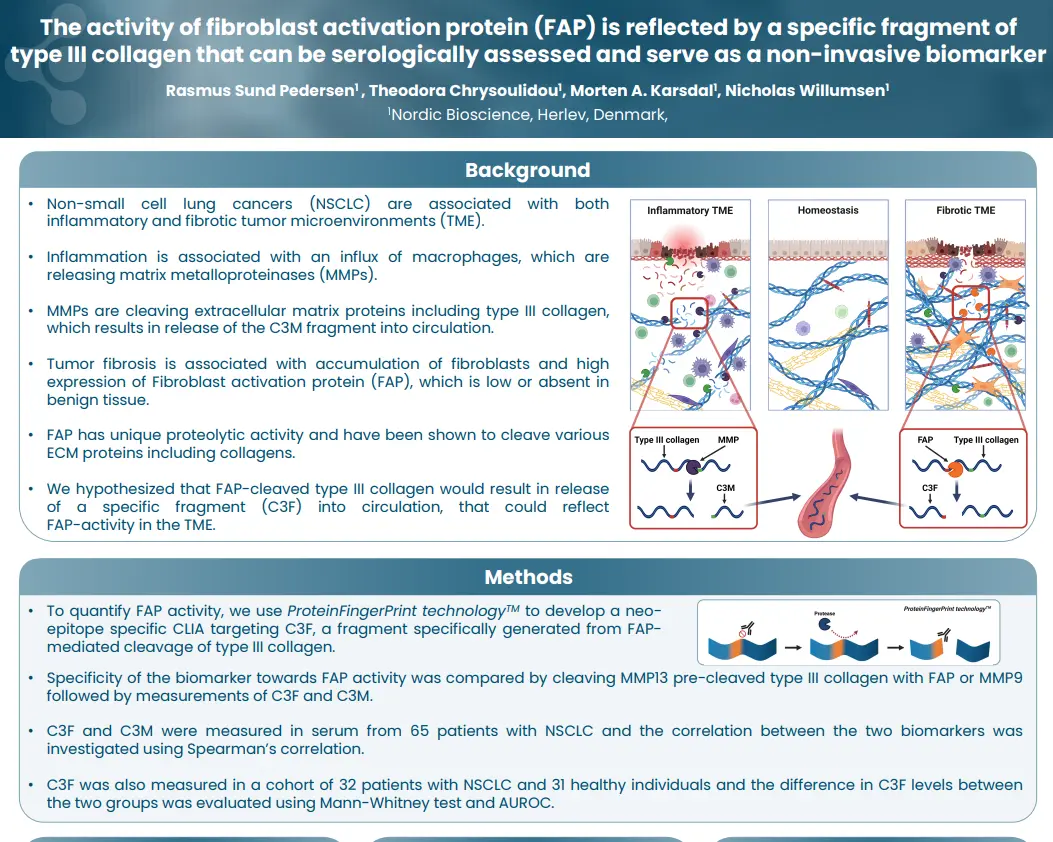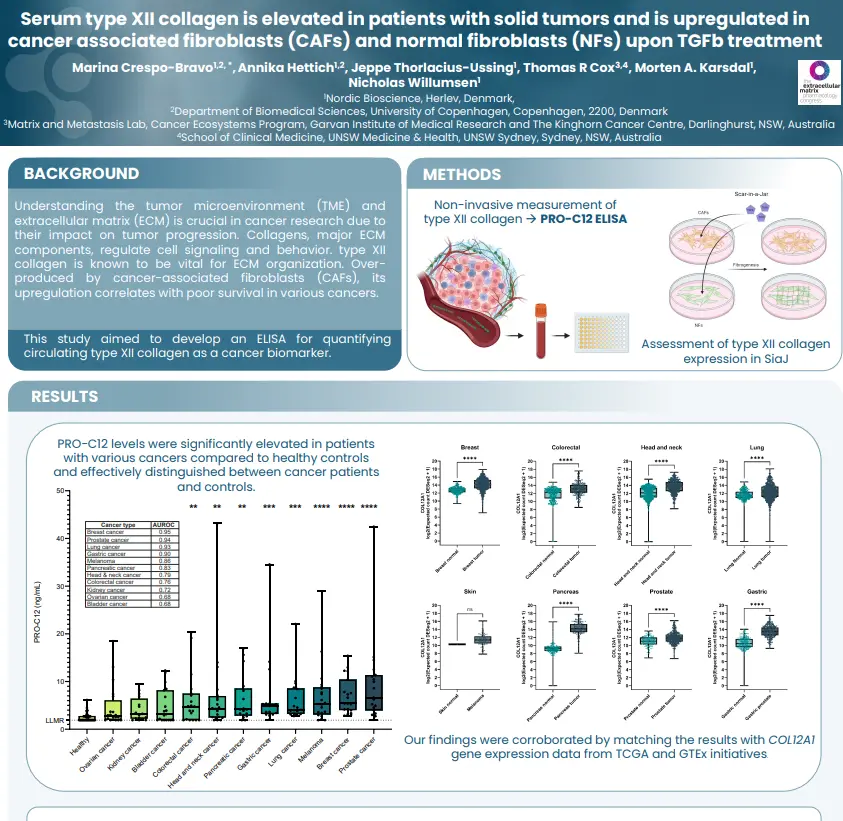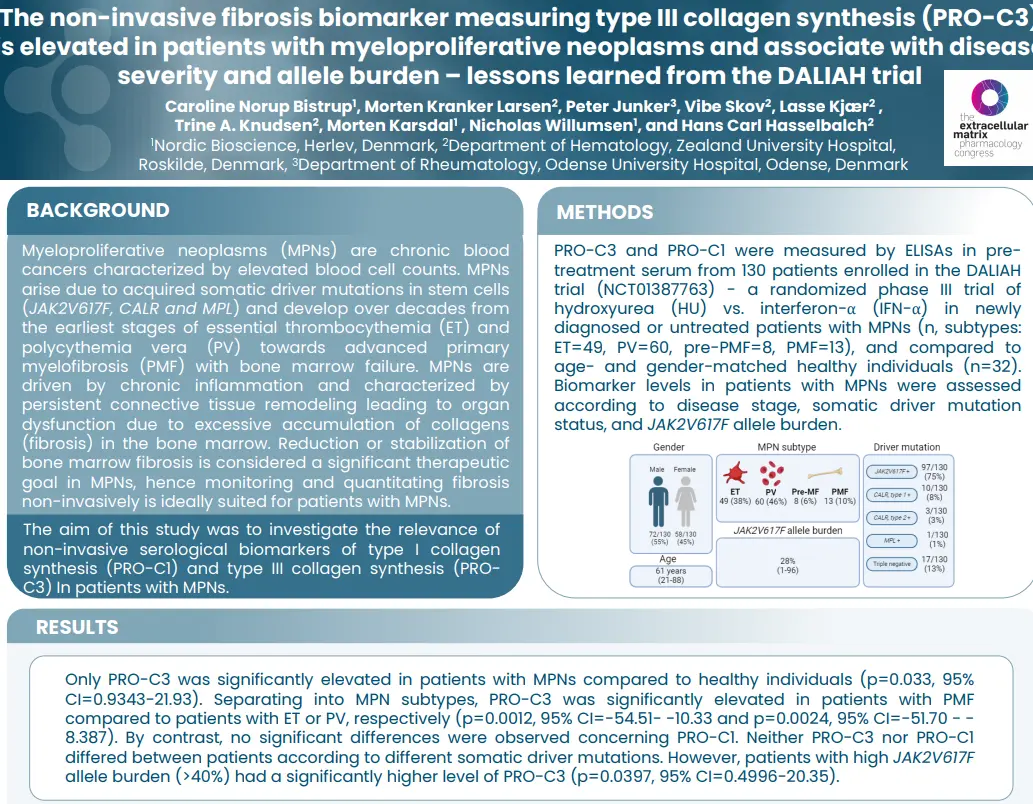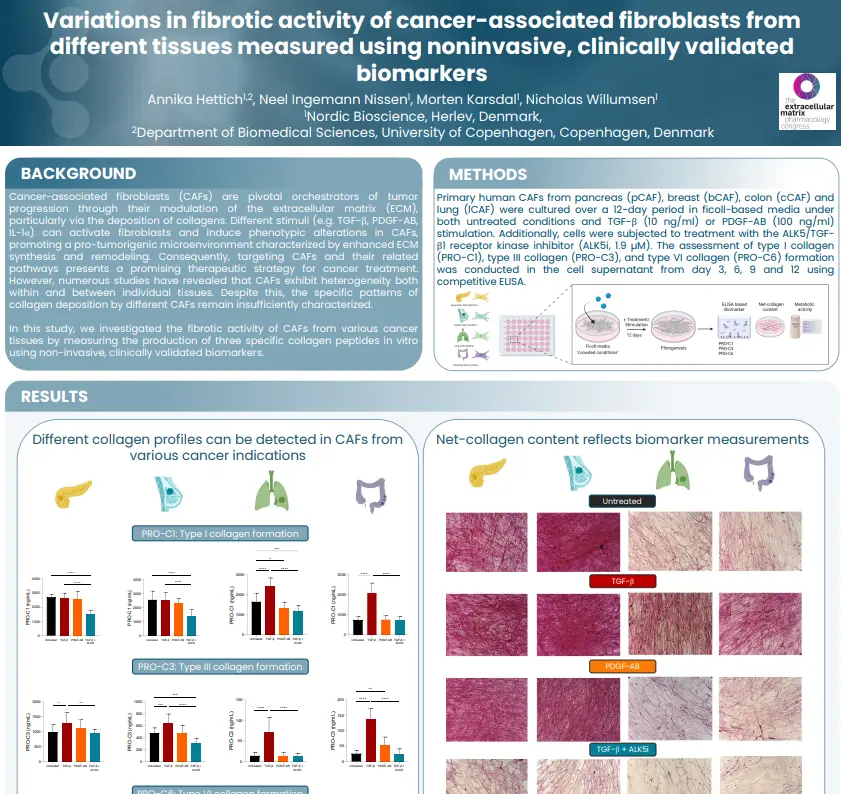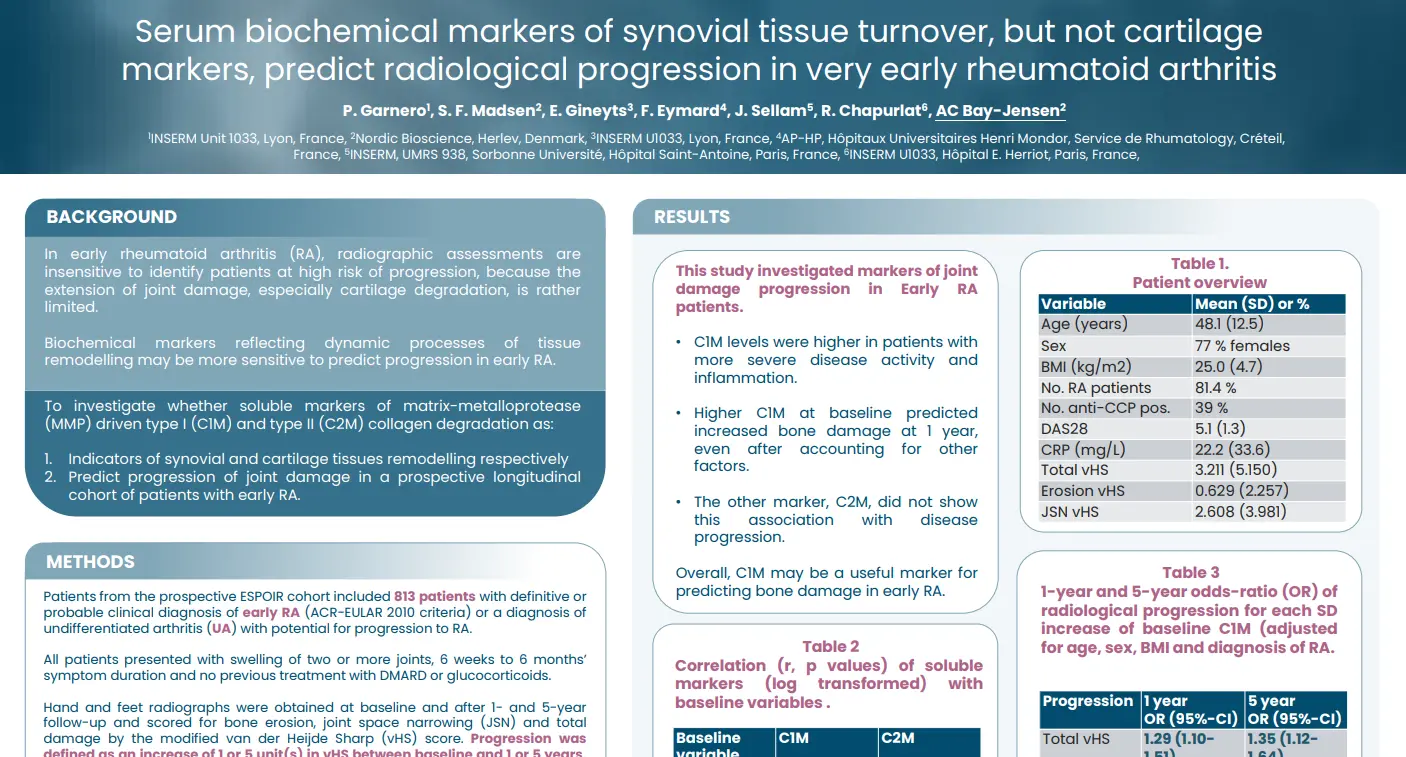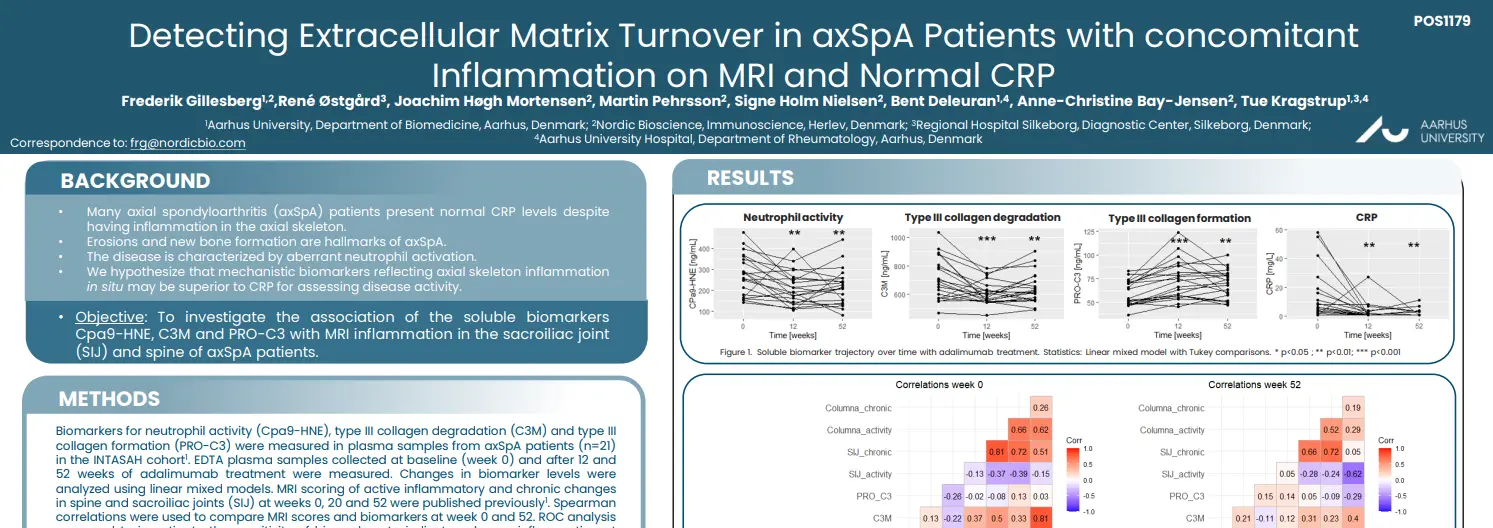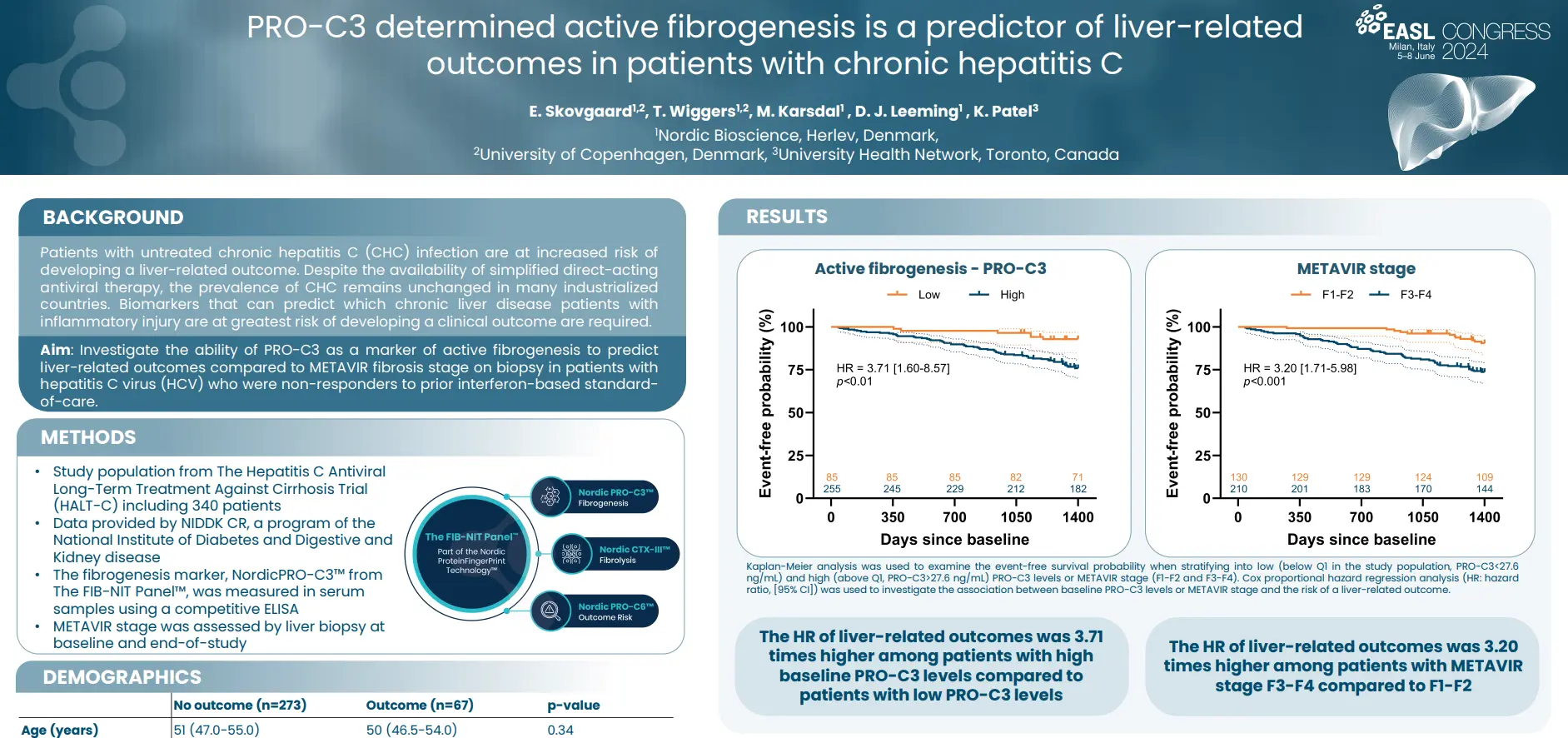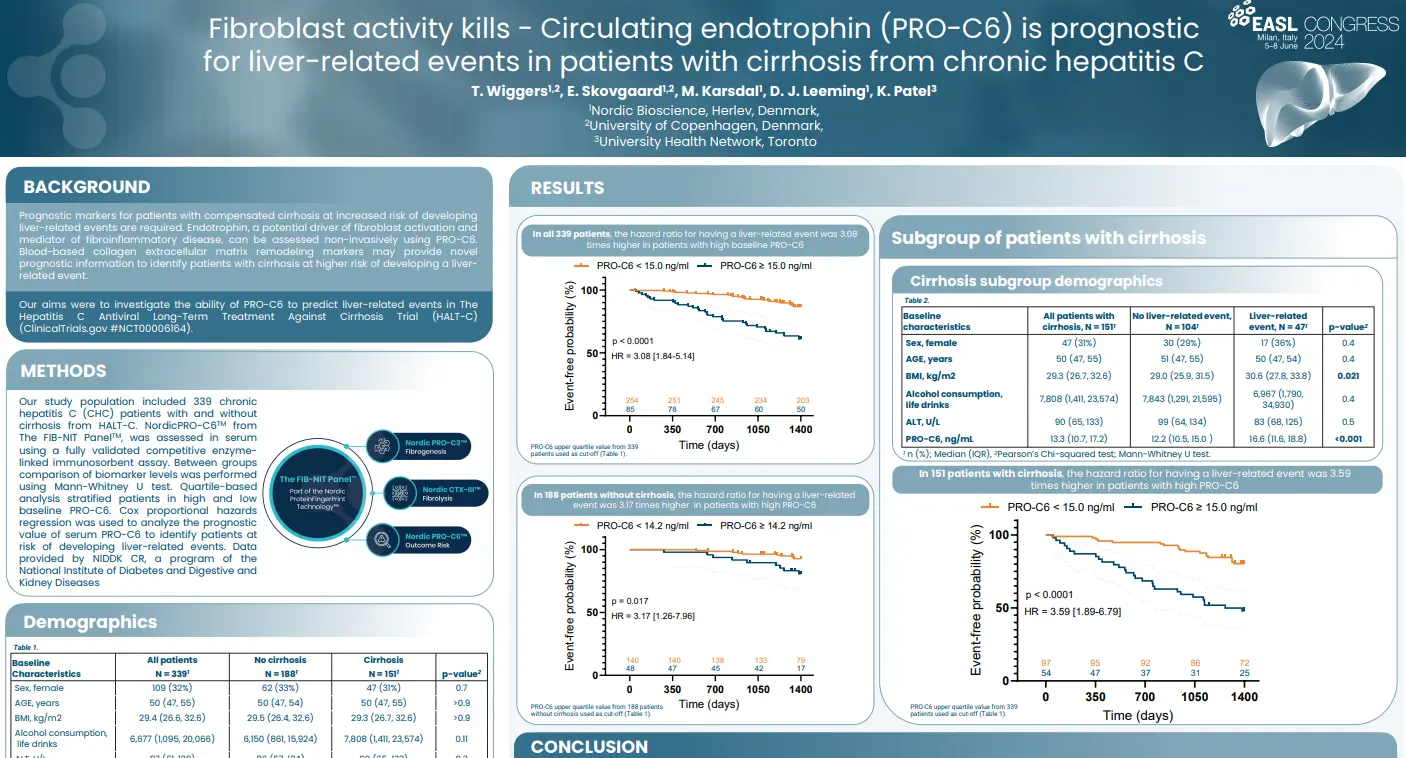Biomarkers quantifying changes in the hair follicular extracellular matrix are elevated in patients with alopecia
Introduction
Alterations in the extracellular matrix (ECM) within the hair follicle microenvironment may contribute to the development and progression of non-scarring alopecia. Various ECM proteins such as type III collagen
and elastin are present within the hair follicle ECM. During wound healing, there is an increase in type III
collagen, while elastin is responsible for the elasticity of connective tissue, and its degradation might affect hair follicle function. There is also an increased immune cell infiltration, such as neutrophils, which target the hair bulb and disrupt the normal ECM architecture within the follicle leading to hair loss.
We aimed to investigate if biomarkers reflecting ECM remodeling could separate patients with non-scarring alopecia from healthy controls.
Poster
Conclusion
Patients with alopecia had an increase in type III collagen formation and elastin degradation, indicating the wound healing processes as well as the loss of elasticity within the surrounding ECM of the hair follicle. Objective biomarkers quantifying changes the hair follicle and its surrounding tissues could serve as potential biomarkers of diagnosis and disease monitoring in alopecia.


